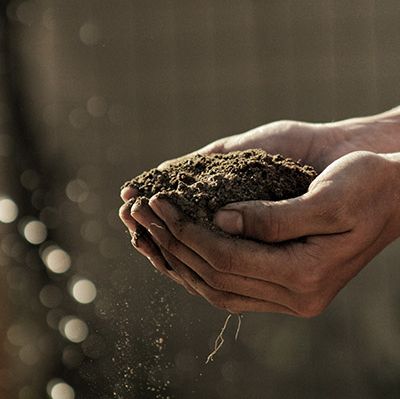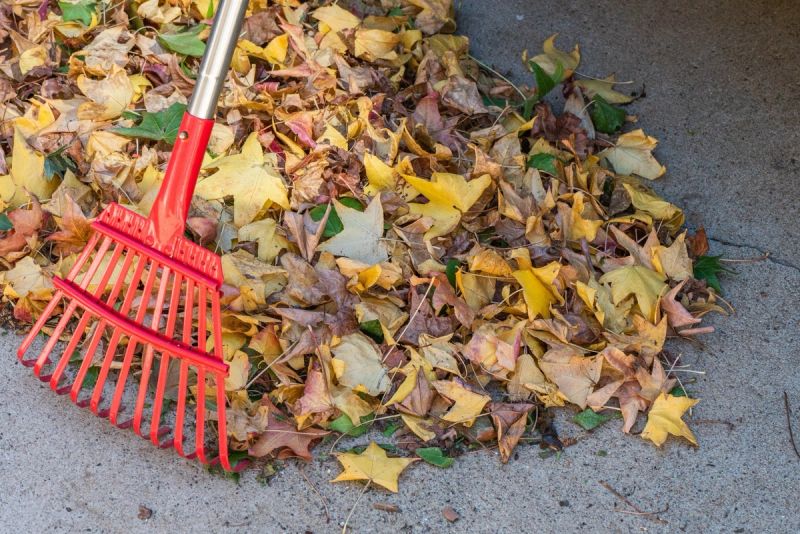How to find out what soil type you have in your garden
Spending a little bit of time getting to know the soil in your garden will help you choose the best plants to grow. So roll your sleeves up and prepare to get dirty (well, dirty hands anyway)
What are the different types of soil?
There are six main types of soil: clay, sand, loam, silt, peat and chalk. The most common soil types are clay, sand, loam and silt. Your garden might be completely one soil type, but it might be a mixture of two (or three). Here’s the main things you need to know about each type of soil:
Clay: If you’re thinking about clay on a potter’s wheel, then you’re not a million miles off. Clay soils are sticky when wet and bake hard in summer, often cracking. You’ll hear these called ‘heavy’ soils, because they hold onto water and nutrients very well. They can be very fertile - yay. But can also be hard to manage - boo. But if you give them a bit of TLC, a clay soil can be very rewarding.
Perfect plants for clay: Betula, Hydrangea, Sorbus, Berberis, Buddleja, Viburnum, Mahonia
Sand: We say sand, you say beach. A sandy soil is not quite as extreme as the beach, but will contain a high proportion of sand. You hear these called ‘light’ soils, due to the fact that they drain quickly. They are easy to work with, but the downside of having such a well-drained soil is that they dry out quickly, so choose plants that don’t mind a bit of drought.
Perfect plants for sand: lavender, Eucalyptus, Cotoneaster, Forsythia, Sambucus, Cordyline, Euonymus, Photinia, Achillea, Phormium
Silt: A bit of a half-way house between sand and clay; silty soils are fairly well-drained, yet don’t dry out as bad as sandy soils. And like a clay soil, can become compacted in winter. It’s normally a fertile soil and as long as you’ve got good drainage, it can be a nice soil to work with.
Perfect plants for silt: Mahonia, Phormium, Salix, Betula and Cornus

Loam: A loamy soil is a mixture of clay, sand and silt; and is probably the most common type of soil in gardens. You might say it is the perfect soil, as it doesn’t have the extremes of clay or sandy soils and is normally fertile, well-drained and easily worked.
Perfect plants for loam: Most plants will grow in a loamy soil, including fruit and vegetables. Knock yourself out, this is a dream soil.
Chalk: These soils may be heavy or light soils, but the main thing is that they contain a high proportion of chalk (or calcium carbonate if you’re getting technical), which makes them alkaline, that is a pH over 7.0 - is this starting to sound like a chemistry lesson?! Basically, this means some plants won’t grow well for you.
Perfect plants for chalk: Lavender, Ceanothus, Campanula, Clematis, Dianthus, Geranium, Lonicera
Peat: Peaty soil is a dark soil that feels damp and spongy to touch - think peat bogs. It normally retains a lot of water, so you need good drainage if on peaty soils. However, this is a rare soil type in gardens.
Perfect plants for peat: heather, Hamamelis, Camellia, Rhododendron and Azalea
How do I know what soil I have in my garden?
The best way (and easiest) is to do the sausage test. Yep, the sausage test. Basically take a small handful of soil, add a little water then try to roll into a sausage shape.
If can roll into a sausage shape and bend it a little without breaking, then you have clay soil. If there’s no way in the world your soil is rolling into a sausage and it’s crumbling all over the place, then you’ve got a sandy soil.
A loamy soil will do something of a mixture of sausage shapes, depending on how much clay, sand and silt it contains.

What kind of soil is best for growing plants?
A loam soil is generally considered the perfect garden soil, being a mixture of clay, sand and silt. It inherits all the best qualities: fertile, easy to work with, well-drained and doesn’t compact easily.
But if you haven’t got a loam soil, never fear. There are plenty of plants that thrive in sandy or clay or chalk soils.

Can I change my soil type?
You can’t really change your soil type as such, but you can do a lot to improve your soil to make it easier to work with. One of the best things you can do to improve any soil is adding lots of organic matter, such as well-rotted manure, composted bark, leaf mould or your own well-rotted compost. Add a layer of organic matter to the top of your soil and loosely work it in with a fork, making sure you do this when the soil is dry.